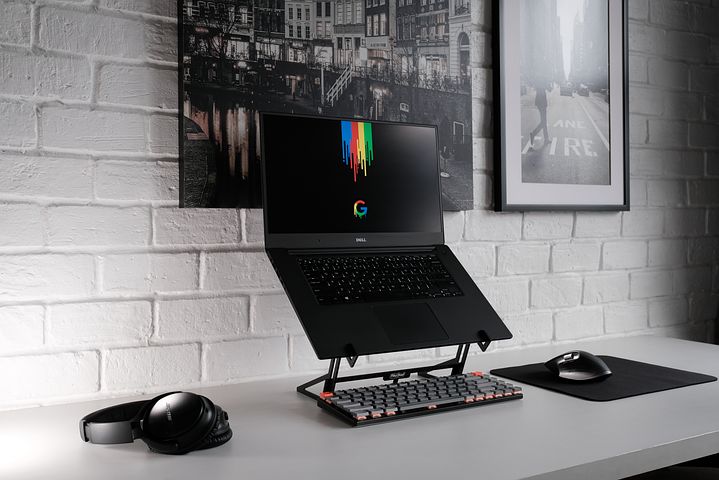
Review of the Razer Book 14 (2025)
The Razer Book 14 (2025) is built for digital nomads, remote professionals, and hybrid workers who need a powerful yet lightweight laptop that can keep up with their on-the-go lifestyle. It doesn’t matter where you are working from; this stylish machine is designed to deliver the performance you need.
In the current business landscape, our working practices are more flexible than ever. And so are the tools we rely on. The Razer Book 14 fits right into this new way of working, offering premium specs, modern connectivity, and a sleek, travel-friendly design that makes it easy to pack and take anywhere.
If you’re looking for a laptop that handles video calls, heavy multitasking, and creative workloads with ease, without dragging down your backpack, the Razer Book 14 might just be the productivity partner you’ve been waiting for. It’s a high-end, ultra-portable laptop that’s ready for serious remote work.
Specs Overview
The Razer Book 14 (2025) is a performance machine packed into a compact frame. Before we carry on with our review of it, here’s a snapshot of what it offers under the hood:
- CPU & GPU: AMD Ryzen AI 9 365 processor with NVIDIA GeForce RTX 5060 or 5070
- RAM: Up to 64GB LPDDR5X
- Storage: 1TB PCIe Gen 4 NVMe SSD
- Display: 14-inch OLED, 2880×1800 resolution, 120Hz refresh rate
- Battery Life: 72Wh battery (claimed up to 11 hours, real-world closer to 6–7 hours)
- Weight & Build: 1.63 kg (3.59 lbs), CNC-milled aluminium
- Ports: 2 x USB-C, 2 x USB-A, HDMI 2.1, microSD slot, 3.5mm jack
- Operating System: Windows 11 Home
Overall, this configuration supports demanding tasks yet still retains a good sense of portability.
Portability & Build Quality
One of the most striking things about the Razer Book 14 (2025) is that it hits the sweet spot between slim form and strong construction.
At just 15.7 mm thick and weighing under 3.6 lbs, it’s easy to carry in a daypack or messenger bag. Therefore, it’s an ideal device for digital nomads who are always on the move.
The laptop is made from CNC-milled recycled aluminium, which not only looks premium but holds up well against the rigors of a traveler’s lifestyle. Moreover, the hinge feels solid and smooth, even after repeatedly being opened and closed, which should give you confidence in its ability to work at a café, co-working space, or even on a plane.
The backlit keyboard is responsive with 1mm travel, so you should find long typing sessions to be quite comfortable. At the same time, the glass trackpad is large and fluid and features precision control that eliminates the need for an external mouse unless you’re working in design or gaming.
Battery Life
Razer claims up to 11 hours of battery life on this laptop. However, most experts who have tested the device say that it only provides around 6–7 hours, depending on what workload you put it through. That said, if you’re just browsing the web, handling email, or joining the occasional Zoom call, you’ll likely squeeze a solid day of work out of it.
Unfortunately, for more intense tasks, like light video editing or Figma workflows, you can expect that number to drop. On the plus side, however, it does charge quickly. The included 200W charger can go from 0 to 50% in about 30 minutes.
The laptop also supports USB-C Power Delivery (up to 100W), which makes it easy to charge with a portable battery or smaller adapter whilst on the go. Such flexibility is very handy when you’re moving between time zones and workspaces.
Performance
When it comes to daily productivity and creative work, this laptop really shines. With the AMD Ryzen AI 9 365 CPU and RTX 5060/5070 GPU, it can handle everything from dozens of Chrome tabs being open and lengthy video calls to light video editing and graphic design.
If you are using tools like Photoshop, Figma, or Lightroom, you should find they feel smooth, with very little lag even under load. Additionally, the integrated AI engine also kicks in during certain tasks like upscaling video or applying filters in creative software, which helps to speed things up.
In terms of thermals, the Razer Book 14 tends to remain cool under pressure. That said, its fans do spin up during heavy workloads, but the noise is surprisingly muted. This means you can work in a quiet café or during a late-night session without feeling like you are drawing attention to yourself.
Overall, benchmark results show it competes well against the ASUS ROG Zephyrus G14 and even punches above its weight in some creative workflows. However, the Zephyrus may still edge it out in pure gaming scenarios.
Display & Audio
Many users believe the laptop’s display is one of the best features of the Razer Book 14. Boasting a 14-inch OLED panel with a 2880×1800 resolution, it offers vibrant colors and deep blacks, which are easy on the eye. Additionally, with a 120Hz refresh rate and peak brightness up to 900 nits in HDR mode, it’s perfect for both work and play.
Sadly, this isn’t a touchscreen. But for many digital nomads, that’s not a dealbreaker. However, the extra screen sharpness and 16:10 aspect ratio should soften any disappointment you may have. They make it a pleasure to edit documents, design, or stream video content.
On the audio front, the Razer includes a six-speaker THX Spatial Audio system, which provides clear and immersive sound. For calls, media, and casual listening, it’s more than sufficient. That said, some users may find the maximum volume a little underwhelming in louder environments.
Ports & Connectivity
You’ll be pleased to read that the Razer Book 14 (2025) doesn’t skimp on connectivity. Indeed, it comes equipped with:
- 2 x USB-C (with DisplayPort and Power Delivery)
- 2 x USB-A (for legacy devices)
- 1 x HDMI 2.1
- 1 x microSD slot
- 1 x 3.5mm audio jack
This lineup means you don’t have to scramble for dongles. So, you can rest assured, if you’re presenting on a projector, transferring photos, or plugging in external drives, you’ll be covered.
The device also features Wi-Fi 7 and Bluetooth 5.4, which gives you top-tier wireless performance for streaming, collaboration, and file sharing without hiccups.
Software & Features
This laptop runs Windows 11 Home and comes with minimal bloatware other than Razer Synapse, which lets you customise keyboard lighting, performance modes, and thermal settings.
That said, a great addition is Snap Tap, a feature that improves typing responsiveness by prioritising the most recent key input. Although it’s subtle, it does make a difference during fast-paced work.
Under the hood, the AMD Ryzen AI chip brings enhanced on-device AI performance. This is ideal for creating background blur in video calls or speeding up creative tasks.
All of this adds up to a clean, fast, and future-ready software experience that requires very little to uninstall or tweak out of the box.
Pricing & Value
At the time of writing, the Razer Book 14 (2025) starts at $2,299 USD and can climb to nearly $3,000 USD for its top configurations.
That puts it squarely in the premium category, in which it competes with the likes of the ASUS ROG Zephyrus G14, MacBook Pro 14”, and Dell XPS 14. While some of those models may offer better value for those who want to partake in pure gaming or media creation, the Razer Book 14 is superior in terms of portability, build quality, and versatility.
Ideal Use Cases
The Razer Book 14 (2025) is ideal for digital nomads, remote workers, creatives, and power users who need high performance in a compact, travel-ready form. It’s also perfect for multitasking, content creation, and light gaming on the go.
However, hardcore gamers or budget-conscious users may want to skip it, especially if they need a larger screen, discrete GPU power, or more affordable alternatives focused solely on performance over portability.
Pros & Cons
The Razer Book 14 (2025) strikes a strong balance between power and portability, making it a good choice for professionals on the move. Still, it’s not for everyone.
Here’s a quick breakdown of its main pros and cons:
Pros:
- Sleek, durable design
- Stunning OLED display
- Strong performance
- Excellent port selection
Cons:
- Expensive
- No touchscreen
- Limited upgradeability
Final Verdict
Combining powerful performance with ultra-portable design, the Razer Book 14 (2025) is well-built, sleek, and can handle both everyday tasks and creative workloads with ease.
The OLED display is probably its standout feature, and the thoughtful port selection means you won’t be reaching for adapters constantly.
While it comes with a premium price tag, the overall package more than justifies the investment for digital nomads and remote professionals who need a reliable performer while on the go.







Responses